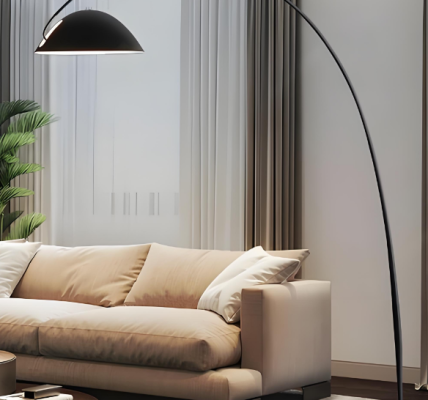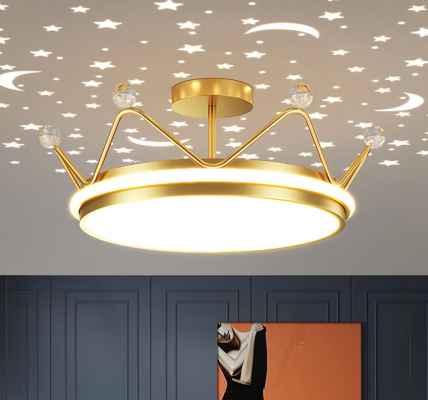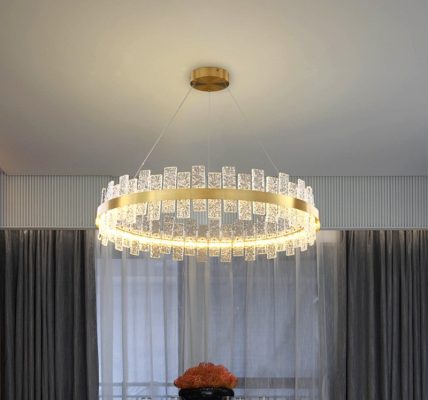Lighting Buyance is an essential element in any space, as it not only illuminates the area but also sets the mood and ambiance. Good lighting can make a room feel warm and inviting, while poor lighting can make it feel dull and uninviting. Proper lighting is crucial for performing tasks, creating a comfortable atmosphere, and highlighting the design and architecture of a space. It can also affect our mood and productivity. For example, bright, natural light can help increase productivity and alertness, while soft, warm light can create a cozy and relaxing environment. Understanding the importance of lighting is key to creating a well-designed and functional space.
Lighting can also be used to highlight specific features in a room, such as artwork, architectural details, or furniture. It can create focal points and draw attention to certain areas, adding depth and visual interest to the space. Additionally, lighting plays a significant role in enhancing the overall aesthetic of a room. The right lighting fixtures can complement the style and decor of a space, adding a touch of elegance and sophistication. Whether it’s a statement chandelier in a grand foyer or recessed lighting in a modern kitchen, the right lighting can elevate the design of any room. In summary, understanding the importance of lighting is crucial for creating a well-designed, functional, and visually appealing space.
Types of Lighting
There are several types of lighting that serve different purposes in a space. Ambient lighting, also known as general lighting, provides overall illumination and sets the tone for the room. It can be achieved through ceiling-mounted fixtures, chandeliers, or track lighting. Task lighting is focused on specific areas where activities such as reading, cooking, or working take place. This type of lighting is essential for providing adequate illumination for tasks and can be achieved through desk lamps, under-cabinet lighting, or pendant lights. Accent lighting is used to highlight specific features or create visual interest in a room. It can be achieved through spotlights, wall sconces, or picture lights. Finally, decorative lighting serves as an aesthetic element in a space, adding style and personality. This type of lighting includes statement chandeliers, pendant lights, and decorative lamps.
Each type of lighting plays a crucial role in creating a well-lit and functional space. By incorporating a combination of ambient, task, accent, and decorative lighting, you can achieve a balanced and layered lighting scheme that meets both the practical and aesthetic needs of the room. Understanding the different types of lighting allows you to effectively plan and design the lighting for any space, ensuring that it is both functional and visually appealing.
Choosing the Right Bulbs
Choosing the right bulbs is essential for achieving the desired lighting effect in a space. There are several factors to consider when selecting bulbs, including color temperature, brightness, energy efficiency, and bulb type. Color temperature refers to the warmth or coolness of the light emitted by the bulb. Bulbs with lower color temperatures (ranging from 2700K to 3000K) emit warm, yellowish light that is often used in living spaces to create a cozy atmosphere. Bulbs with higher color temperatures (ranging from 3500K to 5000K) emit cool, bluish light that is often used in workspaces for better visibility.
Brightness is measured in lumens and indicates how much light a bulb emits. The brightness of the bulb should be chosen based on the specific needs of the space and the activities that take place there. Energy efficiency is another important factor to consider when choosing bulbs. LED bulbs are known for their energy efficiency and long lifespan, making them a popular choice for both residential and commercial spaces. Finally, bulb type refers to the technology used in the bulb, such as incandescent, halogen, CFL (compact fluorescent), or LED.
By understanding these factors and considering the specific needs of the space, you can choose the right bulbs to achieve the desired lighting effect. Whether you’re looking for warm ambient lighting for a cozy living room or bright task lighting for a kitchen workspace, selecting the right bulbs is crucial for creating the perfect lighting scheme.
Positioning and Placement
The positioning and placement of lighting fixtures play a crucial role in achieving optimal illumination in a space. When it comes to ambient lighting, fixtures should be evenly distributed throughout the room to provide overall illumination. This can be achieved through ceiling-mounted fixtures such as chandeliers or recessed lights. Task lighting fixtures should be strategically placed to provide focused illumination where it is needed most. For example, pendant lights can be placed over kitchen islands for task lighting while adding a decorative element to the space.
Accent lighting fixtures should be positioned to highlight specific features or areas in the room. For instance, track lights can be used to illuminate artwork or architectural details. When it comes to decorative lighting, fixtures should be placed strategically to serve as focal points and add visual interest to the space. Whether it’s a statement chandelier in a dining room or decorative wall sconces in a hallway, the placement of these fixtures can significantly impact the overall aesthetic of the room.
In addition to positioning and placement, it’s important to consider the height at which fixtures are installed. For example, pendant lights over a dining table should be hung at a height that provides adequate illumination without obstructing views or conversations. Understanding the importance of positioning and placement is essential for creating a well-lit and visually appealing space.
Lighting for Different Rooms
Different rooms have different lighting needs based on their function and purpose. In living rooms and bedrooms, ambient lighting sets the overall tone for the space and creates a comfortable atmosphere. This can be achieved through ceiling-mounted fixtures such as chandeliers or flush-mount lights. Task lighting is also important in these spaces for activities such as reading or watching television. Table lamps or floor lamps can provide focused illumination where it’s needed most.
In kitchens, task lighting is crucial for food preparation and cooking. Under-cabinet lighting can provide focused illumination on countertops, while pendant lights over islands can serve as both task lighting and decorative elements. In bathrooms, proper vanity lighting is essential for grooming tasks such as applying makeup or shaving. Wall sconces on either side of the mirror can provide even illumination without casting shadows on the face.
In home offices or workspaces, task lighting is important for providing adequate illumination for reading and working on computers. Desk lamps with adjustable arms can provide focused illumination where it’s needed most. Understanding the specific lighting needs of different rooms allows you to create a well-lit and functional space that meets both practical and aesthetic requirements.
Creating Ambiance with Lighting

Lighting plays a significant role in creating ambiance and setting the mood in a space. The color temperature of light can greatly impact the ambiance of a room. Warm, yellowish light creates a cozy and inviting atmosphere, making it ideal for living rooms and bedrooms. Cool, bluish light can create a more energetic and vibrant ambiance, making it suitable for workspaces or areas where focus and productivity are important.
Dimmer switches are another effective way to create ambiance with lighting. They allow you to adjust the brightness of the light according to your needs and preferences, whether you want bright task lighting for working or soft ambient lighting for relaxation. Layering different types of lighting also helps create depth and visual interest in a room. By combining ambient, task, accent, and decorative lighting, you can achieve a balanced and layered lighting scheme that enhances the overall ambiance of the space.
Finally, decorative lighting fixtures such as chandeliers or pendant lights can add personality and style to a room while serving as focal points that contribute to the overall ambiance. By understanding how different types of lighting can impact ambiance and mood, you can effectively use lighting to create a well-designed and inviting space.
Tips for Perfect Lighting
– Consider the specific needs of each room when planning the lighting scheme.
– Use a combination of ambient, task, accent, and decorative lighting to achieve balanced illumination.
– Choose bulbs with the right color temperature and brightness for each space.
– Pay attention to positioning and placement of lighting fixtures to ensure optimal illumination.
– Use dimmer switches to adjust the brightness of light according to your needs.
– Consider layering different types of lighting to create depth and visual interest in a room.
– Use decorative lighting fixtures as focal points to add style and personality to the space.
– Regularly clean light fixtures and replace bulbs as needed to maintain optimal illumination.
– Consider energy-efficient options such as LED bulbs to save on energy costs.
– Consult with a professional designer or electrician for expert advice on planning and installing your lighting scheme.
In conclusion, understanding the importance of lighting is crucial for creating well-designed, functional, and visually appealing spaces. By considering different types of lighting, choosing the right bulbs, paying attention to positioning and placement, and understanding specific lighting needs for different rooms, you can create a perfect lighting scheme that enhances both the practicality and ambiance of your space. With these tips in mind, you can effectively use lighting to transform any room into a well-lit and inviting environment that meets your specific needs and preferences.


